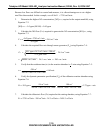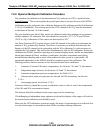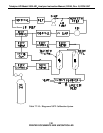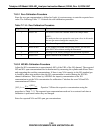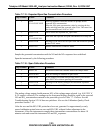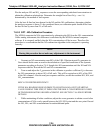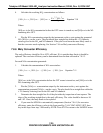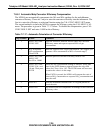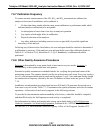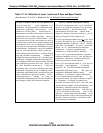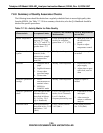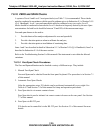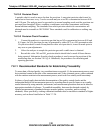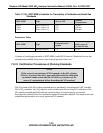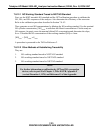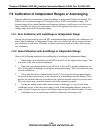
Teledyne API Model 200A NO
X
Analyzer Instruction Manual, 02246, Rev. G, DCN 5247
7.8.7 Calibration Frequency
To ensure accurate measurements of the NO, NO
x
, and NO
2
concentrations, calibrate the
analyzer at the time of installation, and re-calibrate it:
1.
No later than three months after the most recent calibration or performance audit which
indicated analyzer calibration to be acceptable.
2.
An interruption of more than a few days in analyzer operation.
3.
Any repairs which might affect its calibration.
4.
Physical relocation of the analyzer.
5.
Any other indication (including excessive zero or span drift) of possible significant
inaccuracy of the analyzer.
Following any of the activities listed above, the zero and span should be checked to determine if
a calibration is necessary. If the analyzer zero and span drifts exceed the calibration limits in
Table 9-9-1 of Section 2.0.9, Subsection 9.1.3 (Q.A. Handbook), a calibration should be
performed.
7.8.8 Other Quality Assurance Procedures
Precision is determined by a one-point check at least once every two weeks. Accuracy is
determined by a three-point audit once each quarter.
Essential to quality assurance are scheduled checks for verifying the operational status of the
monitoring system. The operator should visit the site at least once each week. Every two weeks a
Level 1 zero and span check must be made on the analyzer. Level 2 zero and span checks should
be conducted at a frequency desired by the user. Definitions of these terms are given in Table 7-
7-18.
In addition, an independent precision check between 0.08 and 0.10 ppm
mu
st be carried out at
least once every two weeks. Table 7-7-19 summarizes the quality assurance activities for routine
operations. A discussion of each activity appears in the following sections.
To provide for documentation and accountability of activities, a checklist should be comp
iled
and then filled out by the field operator as each activity is completed.
For information on shelter and sample inlet system, an in-depth study is in Field Operations
Guide for Automatic Air Monitoring Equipment, Publication No. APTD-0736, PB 202-249 and
PB 204-650, U.S. Environmental Protection Agency, Office of Air Programs, October 1972.
7-27
PRINTED DOCUMENTS ARE UNCONTROLLED



